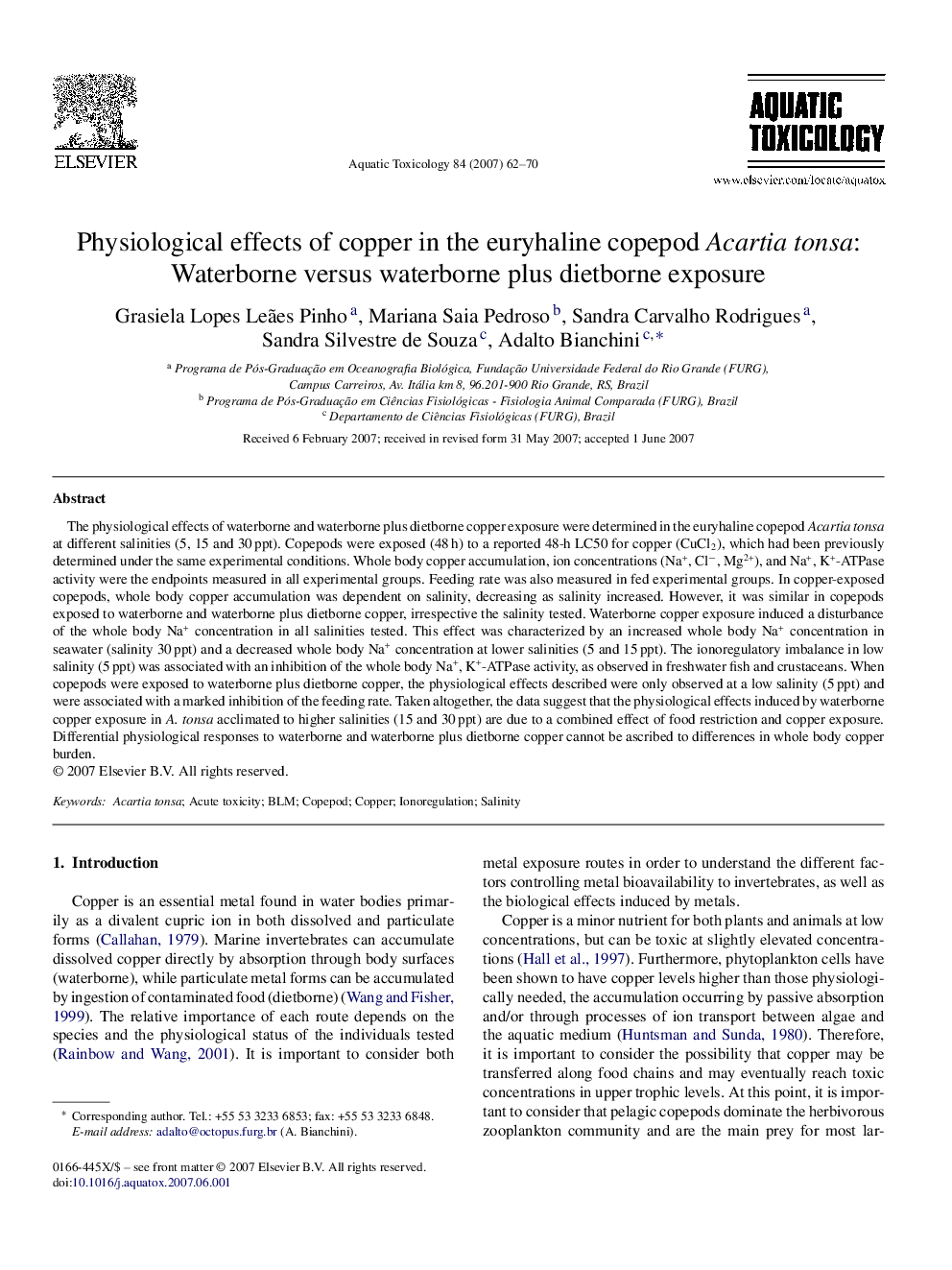| کد مقاله | کد نشریه | سال انتشار | مقاله انگلیسی | نسخه تمام متن |
|---|---|---|---|---|
| 4530996 | 1324745 | 2007 | 9 صفحه PDF | دانلود رایگان |

The physiological effects of waterborne and waterborne plus dietborne copper exposure were determined in the euryhaline copepod Acartia tonsa at different salinities (5, 15 and 30 ppt). Copepods were exposed (48 h) to a reported 48-h LC50 for copper (CuCl2), which had been previously determined under the same experimental conditions. Whole body copper accumulation, ion concentrations (Na+, Cl−, Mg2+), and Na+, K+-ATPase activity were the endpoints measured in all experimental groups. Feeding rate was also measured in fed experimental groups. In copper-exposed copepods, whole body copper accumulation was dependent on salinity, decreasing as salinity increased. However, it was similar in copepods exposed to waterborne and waterborne plus dietborne copper, irrespective the salinity tested. Waterborne copper exposure induced a disturbance of the whole body Na+ concentration in all salinities tested. This effect was characterized by an increased whole body Na+ concentration in seawater (salinity 30 ppt) and a decreased whole body Na+ concentration at lower salinities (5 and 15 ppt). The ionoregulatory imbalance in low salinity (5 ppt) was associated with an inhibition of the whole body Na+, K+-ATPase activity, as observed in freshwater fish and crustaceans. When copepods were exposed to waterborne plus dietborne copper, the physiological effects described were only observed at a low salinity (5 ppt) and were associated with a marked inhibition of the feeding rate. Taken altogether, the data suggest that the physiological effects induced by waterborne copper exposure in A. tonsa acclimated to higher salinities (15 and 30 ppt) are due to a combined effect of food restriction and copper exposure. Differential physiological responses to waterborne and waterborne plus dietborne copper cannot be ascribed to differences in whole body copper burden.
Journal: Aquatic Toxicology - Volume 84, Issue 1, 15 August 2007, Pages 62–70